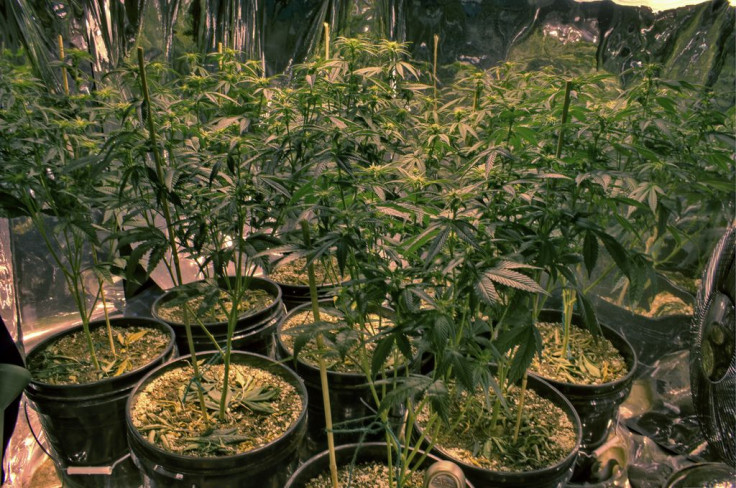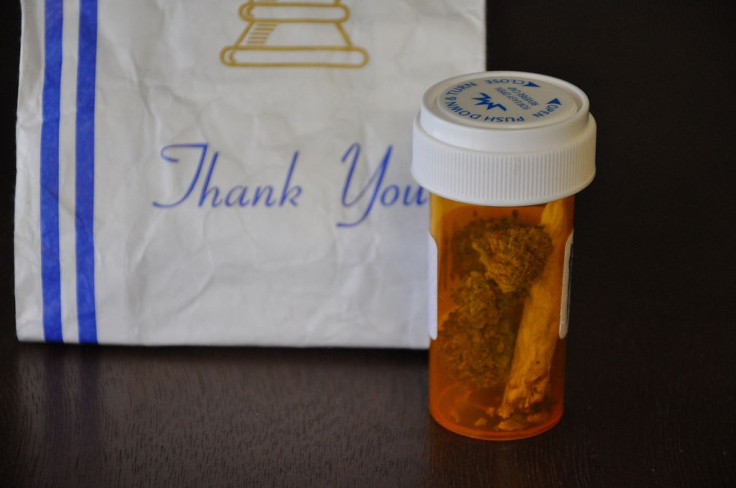NY Medical Marijuana Bill: Why The Compassionate Care Act Will Only Benefit A Select Few

As New York becomes the 23rd state to enact a medical marijuana program (MMP), many New York residents are, to put it lightly, dissatisfied with the overall outcome of the final bill. Despite the 22 other models, ranging from the liberality of California to the full-blown legalization within Colorado, to a more moderate template from our neighbor New Jersey, New York has taken its own course completely.
Because of Gov. Andrew Cuomo’s exaggerated preoccupation with the risks of medical marijuana over its benefits, it is nearly impossible for the bill to function as a statewide program. With its unending ambiguities and built-in clauses that allow the program to be pulled at any time, NY’s program may never actually reach its severely limited number of patients.
Let’s Break Down The Basics…
Cuomo, along with other legislative leaders, passed NY’s medical marijuana bill on June 19, 2014. Better known as NY’s Compassionate Care Act, the bill includes the provision that treatment is reserved for patients with “serious conditions” and will be distributed in a manner that consistently protects “public health and safety.”
According to Cuomo, the final draft of the bill proves to be exactly what New York needs right now. Speaking at a press conference the day legislative leaders announced their agreement for the pilot program, he said:
Medical marijuana has the capacity to do a lot of good for a lot of people who are in pain and who are suffering, and are in desperate need of treatment that will provide some relief. … At the same time, it’s a difficult issue because there are also risks that have to be averted — public health risks, public safety risks — and we believe this bill strikes the right balance.
These “public health and safety risks,” loom over this bill like a dark cloud. Even though safety should always be taken into account, the bill's restrictions border on excessive. From limiting the number of dispensaries, to the few patients applicable, to the tight regime running everything, the benefits are consistently outweighed by the “risks.” As a result, the bare minimum has been instituted in order to be considered a state-wide MMP.
Restrictions On Patients And Consumable Forms
As mentioned, the bill only allows patients with “serious conditions” to be prescribed medical marijuana. By law, “serious conditions” are defined as debilitating, life-threatening diseases, specifically: cancer, HIV/AIDS, ALS, Parkinson’s, multiple sclerosis, damage to nervous tissue of the spinal cord with objective neurological indication of intractable spasticity, epilepsy, inflammatory bowel disease, neuropathies, or Huntington’s disease. Conditions associated with, or resulting as complications of the aforementioned diseases are included, specifically: cachexia or wasting syndrome, severe or chronic pain, severe nausea, seizures, and severe/persistent muscle spasms.
Compared with other states, the list is small. California, Colorado, and New Jersey all have a similar list of specified conditions, but with more addendums and room for interpretation. For instance, California’s clause that states, “any other chronic or persistent medical symptom that either substantially limits a person’s ability to conduct one more of major life activities as defined in the Americans with Disabilities Act of 1990, or if not alleviated, may cause serious harm to the person’s safety, physical, or mental health,” allows a greater inclusion of participants. Colorado, where marijuana is also legalized for recreational use, goes even further, providing patients with the ability to submit a petition to have alternate conditions approved by the state health agency. New Jersey, although similar to New York, has instituted Alternate Treatment Facilities (ATCs) that are required throughout the state; at least two in northern regions, two in central regions, and two in southern regions. These establishments are nonprofits and are increasing in number statewide.
According to Dr. Matthew Jackson, internist at Arnot Ogden Medical Center in Painted Post, N.Y., there are other patients not mentioned who can benefit from medical marijuana. “For the majority of my patients, medical marijuana benefits them in controlling their chronic pain, especially those with fibromyalgia,” he told Medical Daily. “It helps them not use as many narcotics. I also see the benefits to treat seizures and migraines.”
The bill’s allowable forms for consumption include extracts, tinctures, oils, and edibles, but not smoking — the most popular form. New Jersey, California, and Colorado all allow smoking, with California and Colorado also allowing marijuana plant growth. Patients in California are allowed to cultivate six mature or 12 immature marijuana plants for their own use, while patients in Colorado are only allowed to cultivate six plants, with three or less being mature.
Jackson also said that when it comes to medical marijuana, smoking may be risky. “I actually have my patients vaporize it, because any time you smoke or burn something you have the potential of creating carcinogens,” he said. “But at the end of the day, that is the method by which everyone has been using it.”

The Minute Number Of Dispensaries
The current state of the bill makes medical marijuana virtually unavailable. Only five registered organizations are allowed in the state, running up to four dispensaries each. This leaves New York with a total of 20 or fewer dispensaries statewide. To put this into perspective, some estimate California has between 500 to 1,000 dispensaries for medical marijuana sale.
In an interview with Medical Daily, Assemblyman Richard Gottfried (D-NY), a sponsor of NY’s medical marijuana bill, pointed to the limited number of dispensaries as one of many restrictions that hinder a fully functional program.
“In a state with 20 million people, and 50,000 square miles, the thought that we would allow only 20 places where one can dispense medical marijuana is ridiculous. In most areas of New York City you can find more than 20 dispensaries for morphine [pharmacies] in a five-minute walk.”
The Assemblyman added that to attach such a stigma to medical marijuana is wholly nonsensical, when narcotics are widely used across the country.
“With drugs that are dramatically more dangerous, and extraordinarily powerful with enormous side effects, the law respects the judgment of physicians,” he added. “These regulations treat [medical marijuana] as if it were more dangerous than other drugs.”
Like many other aspects of the bill, the determination of who these organizations will be and where they will be located is left up to the state and the Department of Health (DOH). Organizations applying for registration must exhibit no pre-existing drug offenses, as well as the ability to a post a $2 million bond, and proof that they own the land that will be used to grow the product. This means that the medical marijuana industry in New York will be vertically integrated; those who sell the marijuana will also produce it. As this power will only be in the hands of four organizations, New York is assuring a virtual trust on the industry.
Gottfried, too, cited the required vertical integration of registered organizations as another issue. Normally illegal in New York State, this will leave power in the hands of those with wealthy backers and immense capital.
“During registration, an organization must list all equipment they are going to use in their operation. But at this time, they will not know what types of medical marijuana the DOH will allow, making it entirely impossible to specify what equipment is necessary to get the organization running,” he said.
As this is a requirement for registration, it offers yet another obstacle in the way of getting New York’s MMP started.
The Unyielding Regime That Is NY’s MMP
NY’s MMP is under the control of the DOH and under the ultimate supervision of NY’s executive government. It’s thus up to the DOH, the governor, and the state police to develop the program’s course at their own discretion. This system, however, resulted in a number of built-in clauses that allow many different parties to appeal to disband the program at any time.

As you may have noticed, everything in the program must be approved by the Health Commissioner. This includes the list of added/subtracted diseases, allowable dosage and the form that dosage takes, the price per dose, who can become a dispensary, when the program starts, and if/when the program ends. As one clause states, that end may be in seven years if the program is not renewed.
Also, the licenses for registered organizations, as well as licenses for patients will be distributed 18 months after the effective date, or until the Commissioner or Superintendent of Police ensures the program can be run according to public health and safety standards. The governor is also within his power to terminate all organization licenses if he deems necessary. So yes, the program can be pulled at any time.
Bottom line: Stalling is the name of the game.
“At the rate the health department is moving, it will be a long time, if ever, that a dispensary is up and running,” Gottfried said. “There is no way of knowing when final regulations will be issued, and then people will have to be submitted to be registered organizations, which ultimately has to be processed. As that drags on for another year or two, more and more patients will suffer and die.”
With the necessary renewal provision after seven years and the compromised health of its citizens on the line, however, New York cannot afford to drag its feet much longer.
Concerns that New York’s MMP cannot exist as it stands now are not unfounded. With all of the obstacles put in place, and the clauses that allow the program to be pulled at any time, it is difficult to see a successful future for New York and this course of treatment. Despite all the evidence to the contrary and the growing demand for it, marijuana is still widely believed to be a dangerous drug devoid of any benefit. With its status remaining as Schedule 1, and its lack of medical legalization on a federal level, New York, as well as the United States as a whole, has a long way to go before it fully uncaps the potential of this controversial plant.
Published by Medicaldaily.com



























